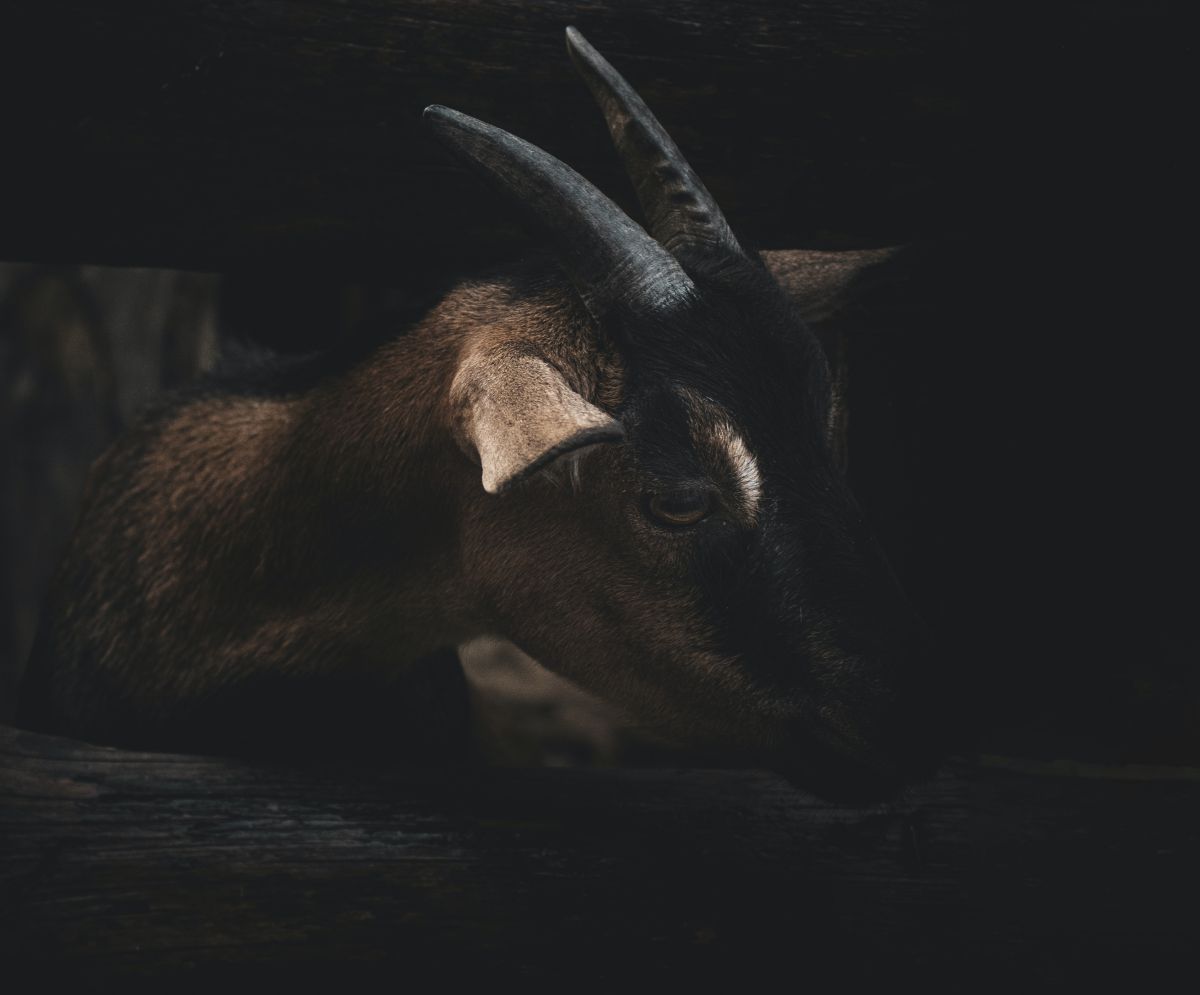Do you know that goats have a greater range of vision than humans? While humans can only detect light in the 380-750 nanometers field, goats can see light in the 320-1000 nanometers range.
So, can goats see in the dark? Let’s explore the unique structure of a goat’s eye and how light affects their vision, comparing day and night vision in goats and looking at the role of pupil shape in nocturnal vision.
We’ll also consider the impact of darkness on goat behavior and the scientific studies around goat night vision.
Key Takeaways
- Goats have good vision and fluid movement in the dark.
- Goats can perceive colors and movement in dimly lit areas.
- Goats have specialized eye anatomy and adaptations that allow them to see clearly in low light conditions.
- Goats rely on other senses and adaptations to survive in the dark.
Understanding Goat Vision: A Biological Perspective
You’re exploring the biological perspective of understanding goat vision to see if goats can see in the dark.
Goats possess an eye structure that gives them good vision and fluid movement in the dark. Their eyes are adapted to low-light environments, allowing them to perceive colors and movement in dimly lit areas. Additionally, their visual acuity has evolved over time, enabling them to be able to move quickly and stay alert in the dark.
Goats have adapted to these dark conditions, allowing them to survive in areas with limited light. This adaptation has enabled them to see in the dark, allowing them to hunt and forage for food even in the absence of light.
Furthermore, their eyes contain a specialized rod and cone structure, enabling them to detect colors and other elements in the dark. This unique eye structure allows them to focus and move quickly in the darkness.
The Unique Structure of a Goat’s Eye
You’ve learned about the unique structure of a goat’s eye and how it enables them to see in the dark, both by providing them with the ability to perceive colors and movement and allowing them to focus and move quickly.
Goats’ eyes are specially adapted to function in low light, with reflective retinas that amplify available light. This also allows them to adjust to sudden changes in light levels rapidly.
Goats’ eyelids have a special third eyelid called the nictitating membrane, which helps protect the eye and increase their ability to see in the dark. This membrane also functions as an anti-glare shield and is transparent, enabling goats to see in dimly lit environments.
Additionally, goats have developed color perception in the dark, allowing them to differentiate between low-light objects.
All these unique features have allowed goats to adapt to their environment and see in the dark.
How Light Affects a Goat’s Vision
Understanding how light affects a goat’s vision is key to recognizing why they can see so well in the dark. It is pivotal in their unique ability to perceive colors and movement.
Goats have leaf adaptations to their eyes, making them more light-sensitive. This adaptation allows them to see better in the dark than other animals.
The anatomy of a goat’s eye is also specialized to allow them to see even in low-light conditions. This eye anatomy also enables them to perceive colors more accurately as they see a more comprehensive range of colors than other animals.
In addition to their leaf adaptations and specialized eye anatomy, goats also have a high degree of light sensitivity. This allows them to detect the slightest changes in light. As the light changes, their behavior also changes, and they can adjust their behavior to survive in the dark.
Overall, this combination of adaptations allows goats to see better in the dark than other animals.
Comparing Day and Night Vision in Goats
You regularly compare goats’ day and night vision to understand their keen ability to see in the dark. Goats have much better vision than humans at night, as their eyes are adapted to low-light environments. They can see in lighting differences that are too dark for humans to see clearly.
Goats also have a particular dietary need that helps them see in the dark: consuming vitamin A. Furthermore, goats can still recognize colors in low light, although they see differently than humans. To protect their eyes, goats have nictitating membranes, which are protective eyelids that can be used to filter out bright light.
Additionally, herd dynamics also play a role in how goats use their vision, as they rely on each other for protection. Therefore, combining their dietary needs, color recognition, and herd dynamics helps goats see in the dark.
The Role of Pupil Shape in Nocturnal Vision
You’ve noticed that the shape of a goat’s pupil affects their night vision. Goats are known to have some of the best night vision among all animals, which is partially attributed to the horizontal slit shape of their pupils.
This shape allows goats to see in conditions with much lower light levels than other animals, giving them an evolutionary advantage during nighttime behavior. Furthermore, the slit shape of their pupils helps to limit the amount of light entering the eye, thus allowing goats to better detect movement in the dark.
This adaptation also allows goats to perceive their environment better when the sun sets, and the darkness begins to take over. In addition to their pupils, goats also have a reflective layer in the back of the eye, which helps to enhance their dark perception further.
As a result of these night adaptations, goats can move around and forage in the dark much more effectively than other animals.
Adapting to Darkness: Do Goats Have Night Vision
Have you ever wondered how goats are able to navigate in the dark despite their lack of night vision? It may seem like a mystery, but goats have evolved to adapt to the darkness. This adaptation is seen through their eye movement, color recognition, and light intensity.
Goats have developed ocular adaptation, which allows them to adjust to low light levels in the environment. This adaptation enables goats to see in the dark, even if it isn’t as well as humans. They’re also unable to distinguish colors in the dark, so they must rely on their other senses.
Additionally, goats also use their horns to aid in nocturnal hunting. This helps them locate food and shelter in the dark.
All of these adaptations help goats survive in the dark and ensure they’re safe.
Scientific Studies Around Goat Night Vision
By studying the anatomy of goats’ eyes, scientists have determined that goats have some night vision capabilities. Goats can navigate in complete darkness without the aid of eyewear technology.
Scientists have also observed that goats have a heightened sensitivity to light and can detect environmental changes that may not be visible to the human eye. Additionally, goats are able to perceive colors in low light, though not to the same degree as humans.
However, goats are known to suffer from a condition known as night blindness, which is characterized by a reduction in visual acuity in dim light. This suggests that, while goats may have some night vision capabilities, they are less advanced than other animals, such as cats.
Frequently Asked Questions
What Is the Difference Between Day and Night Vision in Goats?
You may have heard the claim that goats can see in the dark, but the truth is more complex.
Goats have night vision, but it is different from their day vision. Goats have better-seeing distances at night, but their color perception is reduced.
Additionally, goats have reduced navigation ability at night due to decreased light sensitivity.
Lastly, some goats may suffer from night blindness, meaning they can’t see at all in the dark.
All in all, goats have night vision distinct from their day vision in terms of seeing distances, color perception, navigation ability, and light sensitivity.
How Does Darkness Impact a Goat’s Behavior?
You may have noticed that goats change their behavior when the sun sets. As darkness falls, goats reduce their foraging habits as they’re more aware of nocturnal predators. They also become more selective in their food preferences, preferring to graze on plants near light sources.
Additionally, their mating rituals often occur under minimal light conditions. All these changes in behavior can be attributed to goats’ instinct of self-preservation. Through such behavior, goats are able to maximize their chances of survival in the dark.
Can Goats See in Absolute Darkness?
No, goats can’t see in absolute darkness. Goats have eye structures that allow them to detect motion and color, but their vision is limited in the dark. Goats rely on sound awareness and thermal adaptation to navigate in darkness, as their vision is limited.
Goats, however, can see in low light better than humans because their eye structure allows them to detect more light. Goats are also better able to detect motion in low light. Therefore, goats have an advantage over humans in the dark.
Are Goats’ Eyes Better Adapted to Night Vision Than Other Animals?
Yes, goats’ eyes are better adapted to night vision than other animals. Goats’ anatomy is specifically designed to allow them to see in low-light conditions. Their eyes are wide-set, and their pupils can dilate up to four times the size of the average mammal. This increased light sensitivity allows them to see in dimly lit environments.
Additionally, goats have a higher density of rod cells in their eyes, which are specialized for vision in low-light environments. The unique shape of their eyes also helps them focus on objects in the dark.
These factors make goats’ vision better adapted for seeing in the dark than other animals.
Are Goats’ Pupils More or Less Sensitive to Light Than Other Animals?
Generally speaking, goats’ pupils are more sensitive to light than other animals. Goats have larger pupils than most animals, allowing more light into their eyes. This wider range of vision gives them an advantage when it comes to night vision.
Additionally, goats have a specific adaptation in their eye anatomy that helps them better detect light sources at night. This adaptation is known as night blindness and can help goats better adapt to dimly lit environments.
Ultimately, the large size of goats’ pupils compared to other animals, combined with their specific eye anatomy, helps them better see in the dark.
Conclusion
Goats may not have the same night vision capabilities as some nocturnal animals, but they do possess some unique adaptations that allow them to see in the dark. While the shape of their pupil and the ability to adapt to darkness play a role in their night vision, the exact extent of this vision is still unknown.
However, it’s clear that goats are able to see in the dark to some degree, making them well-suited to living in a variety of environments.

